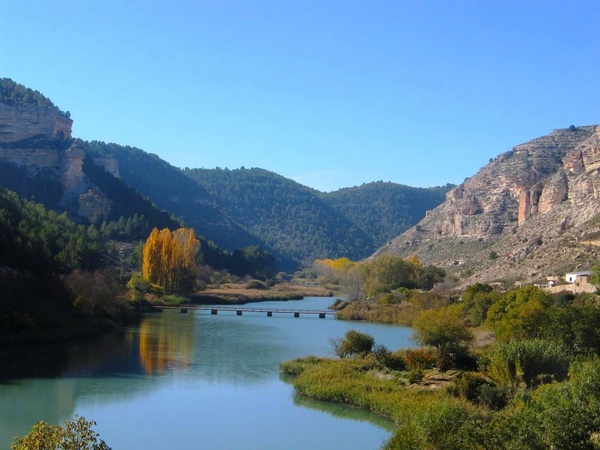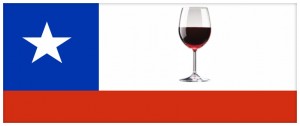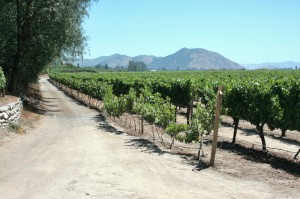
by Lorri | Oct 12, 2016 | UnCorked
Argentina and Chile are a couple of countries to keep an eye on for satisfying the world’s thirst for value-priced wines. Both countries boast natural resources and near-perfect climatic conditions envied by growers around the world. In terms of production, Argentina is fifth and Chile is ninth.
The two countries are hardly new to the wine scene, but the international acclaim for them may be.
Argentina boasts a rich cultural legacy in relation to wine, with more than 400 years of history building on the traditions of New and Old World wines. In addition to this history, Argentina has a unique location offering a distinction in viticulture, with its altitude creating many microclimates. Another asset to viticulture is the soil’s low fertility. (Unlike many other food crops, grape vines produce better fruit when the roots have to struggle to find the nutrients they need.) Very little of the world’s soil is as young and nutrient-deprived as Argentina’s and, adding to this, the purity of the water makes it a viticulture paradise.
Chile offers the same in its unique viticulture identity. The first vines were planted in Chile in the 1550s. The country’s geographic barriers — the Atacama Desert to the north, the Andes Mountains to the east, the Patagonian ice fields to the south and the Pacific Ocean to the west — make Chile an authentic agricultural island. The combination of beneficial natural barriers and a Mediterranean-like climate makes an ideal situation for organic grape growing. While some labels don’t say so, some of the largest organic vineyards in the world are found in Chile.
I recently was honored to be included in a tasting showing off these Argentina and Chile fine wine and its continued greatness.
THE VALUES
- NV Pascual Toso Brut, Argentina (about $12 retail)
- 2014 Pascual Toso Malbec Mendoza, Argentina (about $15 retail)
- 2015 Santa Ema Select Terroir Sauvignon Blanc, Chile (about $11 retail)
- 2014 Santa Ema Select Terroir Chardonnay, Chile (about $11 retail)
- 2015 Norton Malbec LuJan De Cuyo, Argentina (about $11 retail)
- 2014 King Malbec, Argentina (about $13 retail)
THE SPLURGES
- 2015 Montes Spring Harvest Sauvignon Blanc, Chile (about $16 retail)
- 2015 Montes Cherub Rose of Syrah, Chile (about $17 retail)
- 2013 Santa Ema Reserve Merlot Maipo Valley, Chile (about $16 retail)
- 2013 Montes Twins Red Blend, Chile (about $16 retail)
- 2013 Kaiken Reserva Cabernet Sauvignon Agrelo Vineyard, Argentina (about $20 retail)
- 2013 Kaiken Ultra Cabernet Sauvignon, Argentina (about $16 retail)
by Lorri | Jun 12, 2013 | UnCorked
 You’re browsing in your favorite wine shop strolling among the familiar California section and a turn to the next aisle lands you in uncharted territory. The once familiar chardonnays and cabernets are replaced by strange and unfamiliar bottles. Grape names and labels are becoming unrecognizable, almost mysterious. It’s not a bad dream, just the realization of the myriad of wine regions around the globe.
You’re browsing in your favorite wine shop strolling among the familiar California section and a turn to the next aisle lands you in uncharted territory. The once familiar chardonnays and cabernets are replaced by strange and unfamiliar bottles. Grape names and labels are becoming unrecognizable, almost mysterious. It’s not a bad dream, just the realization of the myriad of wine regions around the globe.
The downside of this exploration is it can lead to confusion and uncertainty. Just the act of learning which wines are worth your time and money can be a bewildering and daunting prospect. The names may be unfamiliar (Barrida), the grapes difficult to pronounce (tinto cao) and the growing regions hard to find on a map (Rias Baixas) but they are delicious.
GALICIA
Galicia (an autonomous community located in northwest Spain) is experiencing the spotlight with the rising popularity of Albarino, a wonderfully refreshing grape variety. Albarino is produced and grown in the Rias Baixas region. The region is cooler than most of Spain, giving the wine its crisp, fragrant characteristics.
THE VALUE
- 2011 Martin Codax Albarino, Spain (about $14 retail)
THE SPLURGE
- 2011 La Cana Albarino, Spain (about $19 retail)
PORTUGAL
While much of the rest of the world was planting high-demand varieties like cabernet sauvignon, merlot and chardonnay, Portuguese growers focused on grapes that have been produced in the country for decades. The Douro, most famous for its port houses today, produces exceptional still red wines. The indigenous grapes – touriga nacional, tinta roriz, touriga Franca and tinto cao – are made into wines that expand beyond the common flavors of the world’s wines. Farther south in Barrida and Dao, the baga grape is making a name.
THE VALUE
- 2011 Twisted Douro Vineyards, Portugal (about $14 retail)
THE SPLURGE
- 2011 Barco Negro Douro, Portugal (about $17 retail)
CHILE
Wines such as malbec and camenere from Chile may be familiar to most, but the growing regions of Maipo, Colchagua and Aconcagua may not.Chilean growers have been making great strides in the warm valleys nestled between the Pacific and the Andes. The Colchagua in the central valley region of Rapel has ideal growing conditions for carmenere and merlot. Just to the north the hot Maipo Valley offers excellent conditions for cabernet sauvignon.
THE VALUE
- 2012 Puerto Viejo Sauvignon Blanc, Chile (about $13 retail)
THE SPLURGE
- 2009 Montes Alpha Syrah, Chile (about $23 retail)
by Lorri | May 2, 2012 | UnCorked
 Bottle-by-bottle and sipby-sip, Chile is reinventing its image to get the U.S. wine drinker to take notice.
Bottle-by-bottle and sipby-sip, Chile is reinventing its image to get the U.S. wine drinker to take notice.
It has been in the past 30 years or so that Americans have become familiar with the South American country’s wines. (Until the 1970s, Chile had strong export restrictions.) And one of the first things American consumers noticed was the exceptional value of Chilean wine.
In addition to making wine that’s a great value, Chile has come a long way with its unique blend of old-world philosophy and new-world innovation. Key to the purity and diversity of its grapes, Chile is considered a viticulture paradise with ample sunshine, a dry climate and one of the few wine regions free of phylloxera (a tiny insect that attacks the roots of grapevines, depleting nutrients and slowly starving the vine).
Chile has adopted some of the most dramatic technology changes in the wine world. Until the latter part of the 20th century, most Chilean winemakers focused on local demand — simple oxidized whites and faded reds. But in the late 1980s, growers and producers made a commitment to secure a successful export market. They invested in their vineyards, overhauling and replacing outdated and tired equipment, adding oak barrels, stainless-steel vats and practicing modern winemaking techniques.
With Chile’s transformation came wines at their best, packed with youthful, vibrant fruit. Cabernet Sauvignon, merlot, carmenere and the emerging syrah grapes are the most widely planted reds. Chardonnay and sauvignon blanc remain the country’s best examples of whites.
THE VALUES
- 2011 Conde de Velazquez Cabernet Sauvignon, Chile (about $10 retail)
- 2011 Concha y Toro Xplorador Chardonnay, Chile (about $10 retail)
- 2010 Concho y Toro Casillero del Diablo Cabernet Sauvignon, Chile (about $12 retail)
- 2010 La Playa Block Selection Merlot, Chile (about $11 retail)
THE SPLURGES
- 2010 Terra Andina Altos Malbec, Chile (about $20 retail)
- 2010 Baron Philippe Rothschild Los Vascos Reserve, Chile (about $24 retail)
- 2010 Veremonte Primus Red Wine, Chile (about $25 retail)
by Lorri | Jan 20, 2010 | UnCorked
 In the 1990s, the wine world’s mania for merlot created an enormous international demand. Chilean wineries, with their fruity-style wines, sold sizable amounts of this easy drinking varietal. One day, a viticulturist noticed an odd difference between the Chilean merlot vines and traditional merlot plantings — the leaves on the Chilean plantings did not look like other merlots. After a few tests, it was discovered that the Chilean plantings weren’t merlot at all. They were carmenere, a grape variety once planted alongside the most famous noble grapes of France’s Bordeaux vineyards, such as cabernet sauvignon and merlot.
In the 1990s, the wine world’s mania for merlot created an enormous international demand. Chilean wineries, with their fruity-style wines, sold sizable amounts of this easy drinking varietal. One day, a viticulturist noticed an odd difference between the Chilean merlot vines and traditional merlot plantings — the leaves on the Chilean plantings did not look like other merlots. After a few tests, it was discovered that the Chilean plantings weren’t merlot at all. They were carmenere, a grape variety once planted alongside the most famous noble grapes of France’s Bordeaux vineyards, such as cabernet sauvignon and merlot.
Chilean winemakers took this potentially scandalous event and turned it into a well-timed opportunity to introduce this unique grape to the world. With Chile’s ideal climate for this grape, and because producers pampered the fruit into a distinct style, Chilean wineries can now claim that its success was no accident.
Just as with the merlot grape for which it was mistaken, carmenere produces a highly approachable wine. With low tannin and low acid, the wine has a soft, fruity mouth feel compared with more tannic red wines. Consumers looking to discover wines outside of the better-known, more “fashionable” grapes, will find carmenere a treat.
THE VALUES
- 2007 Concha Y Toro Carmenere Frontera, Chile (about $9 retail)
- 2007 Root 1 Carmenere, Chile (about $14 retail)
- 2007 Ventisquero Carmenere, Chile (about $10 retail)
- 2007 Santa Rita Carmenere, Chile (about $13 retail)
THE SPLURGES
- 2007 Montes Alpha Carmenere, Chile (about $20 retail)
- 2007 Concha y Toro Marques de Casa Carmenere, Chile (about $22 retail)
- 2005 Concha y Toro Terrunyo Carmenere, Chile (about $48 retail)
by Lorri | Mar 25, 2009 | UnCorked
A hot topic in wine media is the expanding wine world.
In the past, many wine lovers were limited to drinking wines produced in their home regions, unless they traveled the world or were wealthy enough to have wine imported.
But ever so slowly, wines from other markets crept onto our wine-store shelves. Today, it’s more like a fast-paced jog.
Chilean wines are a good example. Ten years ago few had tasted a Chilean wine; today they are available at almost every retail shop in the U.S.
Chile’s successful journey started with a word-of-mouth buzz about its exceptional wines, and soon greats in the wine world – the Rothschilds and Lafittes of France, Spain’s Miguel Torres and California’s Robert Mondavi – took notice. They bought land, planted vines and soon their passion and expertise blossomed on Chilean soil.
In the early 1980s, about 10 Chilean wineries exported their products. Today, more than 100 wineries have joined in making the country’s wines a buzz-worthy, quality competitor in the global marketplace.
THE VALUES
- 2008 Conde de Velazquez Sauvignon Blanc, Chile (about $8 retail)
- 2007 Yali Winemaker Selection, Chile (about $9 retail)
- 2007 Concho y Toro Casillero del Diablo Cabernet Sauvignon, Chile (about $12 retail)
- 2007 Terra Andina Carmenere, Chile (about $11 retail)
- 2006 La Playa Block Selection Merlot, Chile (about $11 retail)
THE SPLURGES
- 2006 Casa Lapostolle Merlot, Chile (about $14 retail)
- 2006 Baron Philippe de Rothschild Los Vascos Reserve, Chile (about $20 retail)
- 2006 Veramonte Primus Red Wine, Chile (about $23 retail)
- 2006 Baron Philippe de Rothschild Escudo Rojo, Chile (about $16 retail)

 You’re browsing in your favorite wine shop strolling among the familiar California section and a turn to the next aisle lands you in uncharted territory. The once familiar chardonnays and cabernets are replaced by strange and unfamiliar bottles. Grape names and labels are becoming unrecognizable, almost mysterious. It’s not a bad dream, just the realization of the myriad of wine regions around the globe.
You’re browsing in your favorite wine shop strolling among the familiar California section and a turn to the next aisle lands you in uncharted territory. The once familiar chardonnays and cabernets are replaced by strange and unfamiliar bottles. Grape names and labels are becoming unrecognizable, almost mysterious. It’s not a bad dream, just the realization of the myriad of wine regions around the globe.
